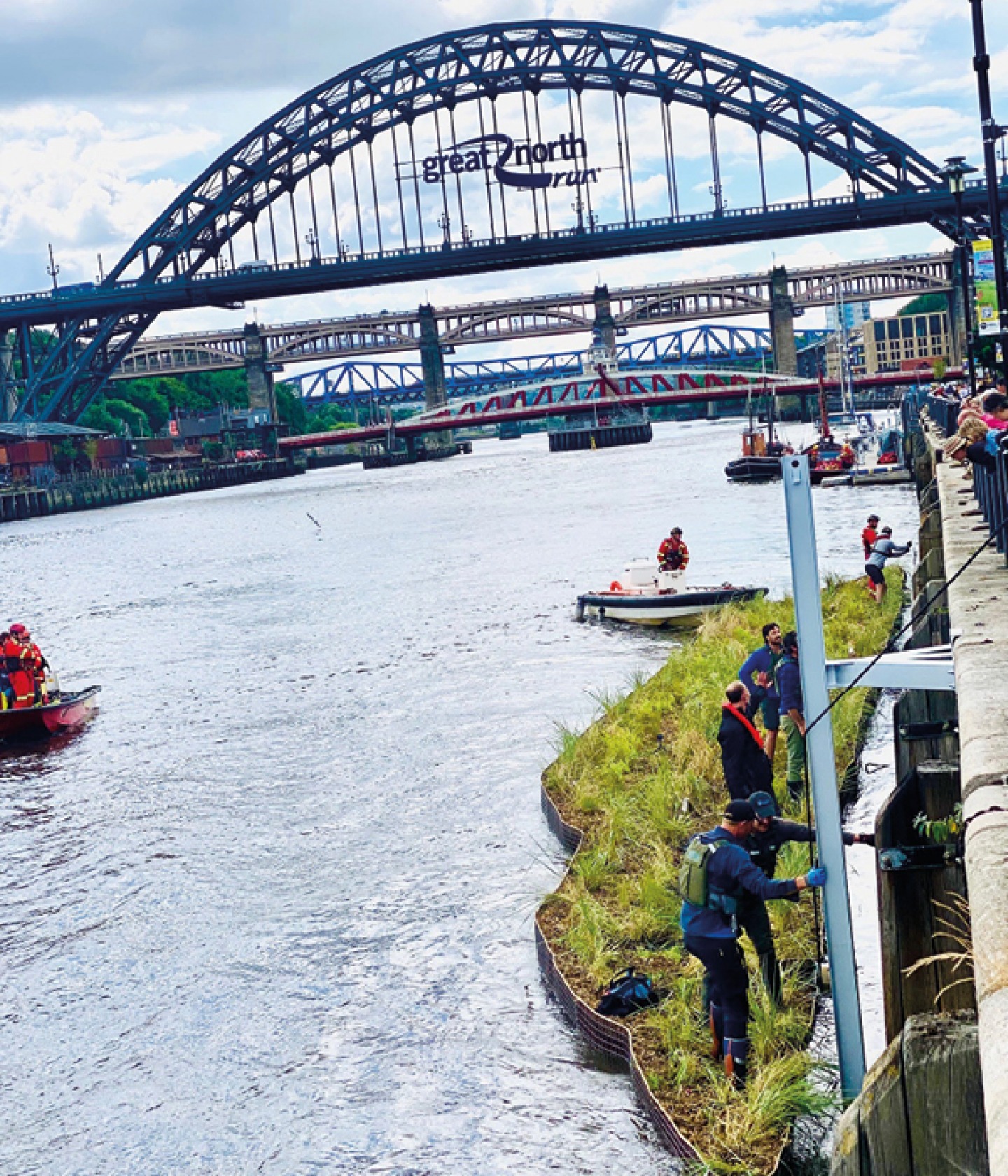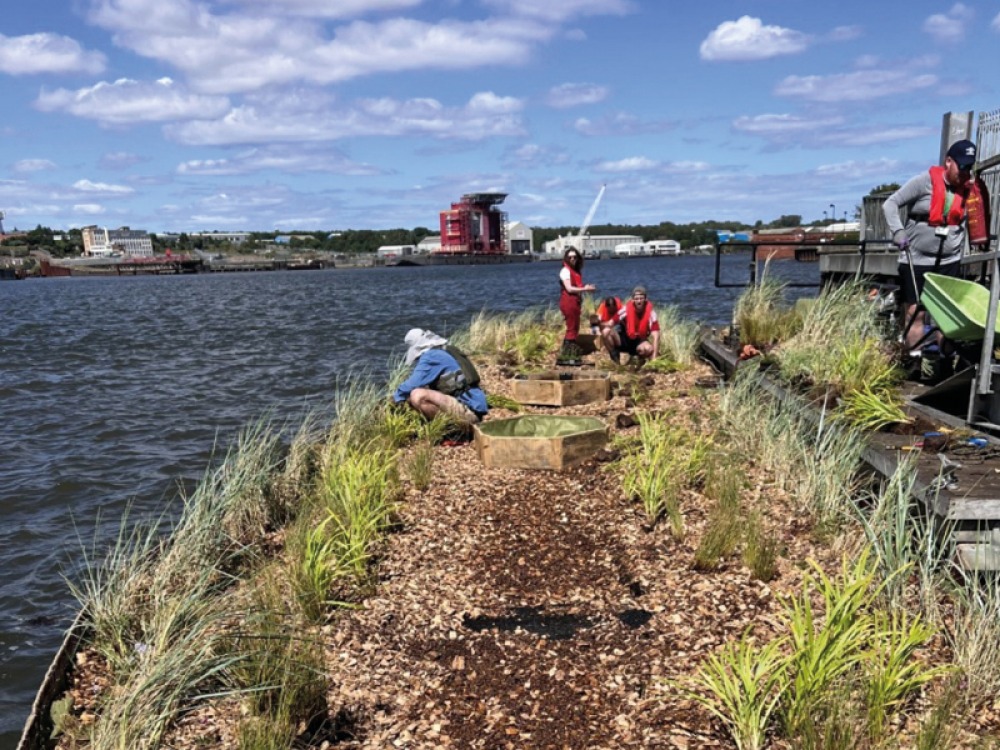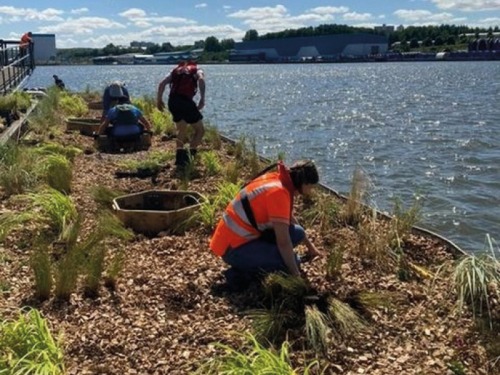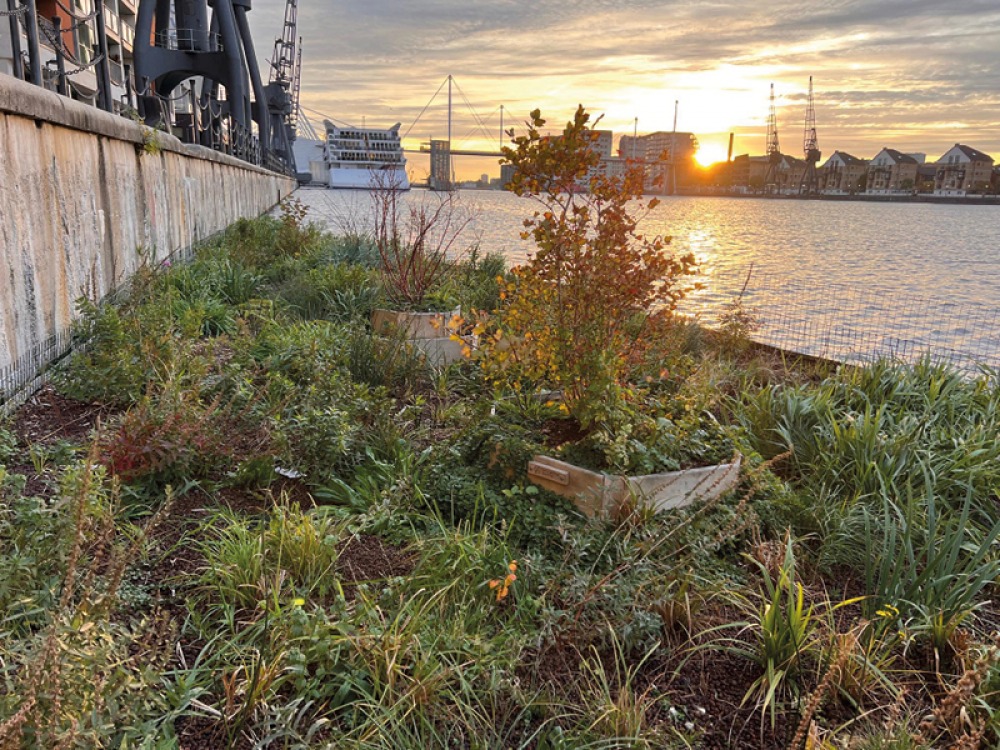How a Floating Island on the River Tyne Will Bring Biodiversity Back to Newcastle

The first of its kind, a floating island built on the River Tyne is set to bring biodiversity back into the city. We chat with Groundwork’s project manager, Hellen Hornby, to find out more


‘Revitalising our Estuaries is a £1.1 million plus project which is largely funded by the Government’s Green Recovery Challenge Fund, and is administered by the National Lottery and the Environment Agency,’ Hellen explains. ‘It’s primarily aimed at restoring and promoting nature recovery in the North East where, over time, because of heavy industrial use, a lot of our estuaries have been adversely affected, and they have suffered in response to various economic challenges, climate change and Covid.’
This new programme of river estuary restoration uses nature-based solutions to improve sites across six estuaries in the North East, focusing on the Wansbeck and Blyth to the north, centrally on the Tyne and Wear, and to the south, the Tees and Esk, delivering habitat protection and creating schemes to maintain natural diversity. ‘We have significant tidal estuaries [in these six areas] and they have small estuarine rivers, rivers which go into the sea, so we have been working with the Tyne Estuary Partnership for the last three to four years developing ideas and creating designs required to install nature-based solutions and enhancements,’ says Hellen.

On the Tyne, Groundwork have installed the world’s first high-tide floating ecosystem with the hope of bringing biodiversity back into the city. ‘We’ve had people saying “it’s not the first of its kind”, but the difference is that this [floating ecosystem] is in a tidal estuary so it has to manage the challenges and changes of tides up to about five metres.’ This is something which hasn’t been done before. The new 1,000 square foot ecosystem was designed by Biomatrix Waters, a group of ecological designers and module ecosystem manufacturers who have installed similar projects around the UK, including floating ecosystems in London and Liverpool Docks. ‘There are similar ones, but they’re all relatively static environments and we had different engineering requirements for getting the Tyne ecosystem in place so it would cope with the challenges of the tidal range. It obviously needed to be robust enough to stand that, as well as withstand any debris which could come downstream – we all know how raging the Tyne can be at times,’ Hellen continues.
The instillation, which began at the start of July down on Newcastle’s Quayside, now sits on the side of the Tyne and has started to recreate habitats lost through industrialisation and urban development in the city. ‘The ecosystem will provide habitats in the area of the Quayside which has a manmade wall, where there’s no natural estuary left, which is one of the main problems with both the Tyne and Tees. There isn’t a lot of natural embankment, so any nature which was once there has been squeezed out,’ Hellen explains. ‘As climate change affects sea levels, the tides rise and we lose a lot of the tidal habitats too, so the good thing about a floating ecosystem is that it can weather change and won’t end up underwater.’
Read More: 14 Must-Try Restaurants, Cafés and Bars on Newcastle’s Quayside
Biomatrix Water designed the floating ecosystem, but the construction and building was a project which really involved the community. ‘We built the structure on the south bank of the Tyne at Hebburn and had volunteers and young estuary rangers come down and help plant it up. We then floated it across the river and upstream to its intended site in Newcastle,’ Hellen tells us.
Now the structure is in place the hope is that the habitat can begin to grow. ‘It obviously has a finite shelf life of around 15 years, but it will provide biodiversity once the plants are established and there will be lots of insects and pollinators which can use it,’ Hellen says. ‘One of the added benefits is creating biodiversity under the structure too, and we should get lots of little marine invertebrates and sea squirts. Mussels and barnacles will also help filter the water so if they colonise part of the ecosystem, although a small area, it could help clean up the Tyne.’
Groundwork have already seen success with their other Revitalising our Estuaries projects. At the structure at Royal Quays, common terns, swans and mallards have been nesting on their ecosystem, although it has only been in place for a year. At Hebburn, South Tyneside and Esk estuary in Whitby, new saltmarshes and mudflats which are important for capturing and storing carbon dioxide are also being created. ‘Mudflats and saltmarshes are priority habitats and habitats we have lost an awful lot of in our coastal region. If you lose a habitat you lose the species and ecosystem associated with that habitat, and rare birds and animals can go into catastrophic decline,’ explains Hellen.


Read More: The Newcastle Foodie Bringing Fantastic Walking Food Tours to the North East
‘The big vision for the floating ecosystem on the Tyne is to green the Quayside, and it’s on a trial basis to see how well it’s received – then we could potentially look at working on the edge of the Quayside at installing more.’ Hellen also suggests opportunities for artificial manmade rock pools, known as vertipools, which create habitats for wildlife and could be installed along the river’s Quayside walls.
‘When we first partnered with Tyne Estuary Partnership back in 2019 the University of Hull mapped out the whole estuary and they identified 70 sites which could benefit from some nature-based solutions. We’re delivering two in Hebburn, we’ve got the floating ecosystem on the Tyne and we’ve done estuary edge planting activities too,’ Hellen says. ‘Boulders which act as flood defences and stop the banks eroding away could have rock pool habitats planted into them – it’s really just opening up that invitation for people to get in touch with us, to talk and share ideas to see if we can get them adopted and put in place.’







